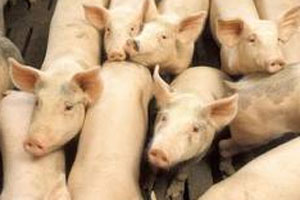Blend-feeding or single diets for pigs?

When looking at growth performance or carcass quality, it does not make a difference whether grower-finisher pigs are fed single diets or when blend-feeding is used. This was the outcome of recent research by Australian researchers.
The researchers set up a completely randomised block experiment, using 216 female pigs (Large White × Landrace, six pigs/pen and 12 replicate pens/treatment), at an average liveweight of 22.6 kg to examine the effect of feeding strategies on performance during the grower-finisher phase.
The pigs were blocked and randomly allocated to the following treatments on the basis of initial liveweight:
• Phase-feeding: Diets changed when the average liveweight of pigs in the pen reached 20, 50 or 80 kg;
• Blend: Diets changed weekly to meet the requirements of the average liveweight of pigs in the pen and;
• Single: The same diet fed throughout (formulated to meet the requirements of the pig at 60 kg liveweight).
Experimental diets
The experimental diets were fed from 22 to 102 kg liveweight. Between 68 and 98 days of age, pigs fed the single diet grew more slowly due to poorer feed conversion than did pigs fed the phase-feeding or blend diets. However, between 99 and 133 days of age, pigs fed the single diet utilised feed more efficiently than did pigs fed the phase-feeding and blend diets.
Therefore, there was no significant effect of the feeding strategies on overall growth performance and there was no significant difference in carcass quality among treatment groups. However, it was 3.74% and 3.51% cheaper to use the blend- and single-diet feeding strategies, respectively, than it was to use a phase-feeding programme.
The present experiment has shown that blend-feeding could be a strategy to reduce the cost of production. Feeding a single diet appears to have merit and may have appeal for certain circumstances. It would need to be investigated further before being implemented commercially.
The research (click to view here) was carried out by K.L. Moore, B.P. Mullan, and J.C. Kim, Livestock Industries Innovation, Department of Agriculture and Food Western Australia, South Perth. The article was published in Animal Production Science.
Related website:
Animal Production Science







